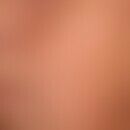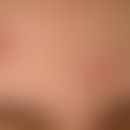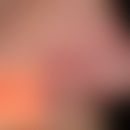Synonym(s)
HistoryThis section has been translated automatically.
Ekman 1788; Sartorius 1826; Lobstein 1849; Vrolik 1849;
DefinitionThis section has been translated automatically.
Very variable, hereditary connective tissue disease caused by various defects of type 1 collagen, characterized by brittle bones, blue sclerae and numbness.
You might also be interested in
ClassificationThis section has been translated automatically.
A distinction is made between:
- OI type I (formerly osteogenesis imperfecta tarda, Lobstein type; manifestation in infancy to early childhood).
- OI type II
- OI type III (formerly osteogenesis imperfecta congenita, Vrolik type, or Vrolik syndrome;
- fractures already in utero)
- OI type IV
- OI type V
- OI type VI
- OI type VII
Note: Osteogenesis imperfecta/Ehlers-Danlos (OI/EDS) overlap syndrome is a connective tissue disorder characterized by a mutation of the COL1A1 (17q21.33) or COL1A2 (7q21.3) genes involved in the alpha-1 and alpha-2 chains of type 1 collagen synthesis.The clinical spectrum of this clinical entity has features of both osteogenesis imperfecta (bone fragility, long bone fractures, blue sclerae, short stature) and Ehlers-Danlos syndrome (hyperextensibility of joints, soft and hyperextensible skin, abnormal wound healing, easy bruising, vascular fragility).
EtiopathogenesisThis section has been translated automatically.
Autosomal dominant, rare autosomal recessive inheritance. Mutations are present that relate to the alpha-1 or alpha-2 chain of collagen I. Further mutations for various proteins have been detected.
ManifestationThis section has been translated automatically.
Congenital or occurring in early childhood. The prevalence of about 1,15,000 births.
ClinicThis section has been translated automatically.
Blue sclerae, brittle bones with fractures, thin, hyperextensible skin, macular skin atrophies, broadly extended scars, numbness.
Other symptoms include loose joints (joint capsules, ligaments, ligaments)
and
tooth deformities due to dentin formation disorders (dentinogenesis imperfecta).
LaboratoryThis section has been translated automatically.
TherapyThis section has been translated automatically.
Progression/forecastThis section has been translated automatically.
LiteratureThis section has been translated automatically.
- Axmann von Wertheim E (1831) Strange fragility of bones without dyscrastic cause as a pathological peculiarity of three siblings. Ann complete Heilk (Karlsruhe) 4: 58-68
- Ekman PJ (1788) Dissertatio medica descriptionem et casus aliquot osteomalaciæ sistens. J. Edman, Upsaliae
- Kindelan J et al (2003) Orthodontic and orthognathic management of a patient with osteogenesis imperfecta and dentinogenesis imperfecta: a case report. J Orthodontic 30: 291-296
- Lobstein JF (1833) De la fragilité des os, ou l'ostéopsathyrose. Traité de l?anatomie pathologique: 2: 204-212
- Ries-Levavi et al (2004) Genetic and biochemical analyses of Israeli osteogenesis imperfecta patients. Hum Mutate 23: 399-400
- Sartorius CF (1826) Rachitides congenitae observationes. Dissertation, Medical Faculty of the University of Leipzig
- Spurway J (1896) Hereditary tendency to fracture. Br Med J (London) 2: 844
- Stilling H (1889) Osteogenesis imperfecta. Virchows Arch pathol Anat Physiol klin Medicin (Berlin) 115: 357
- Vrolik W (1849) Tabulae ad illustrandam embryogenesin hominis et mammalium, tam naturalem quam abnormem. Weigel, Londinck, Lipsiae
Incoming links (15)
Aortic valve insufficiency; Blegvad-haxthausen syndrome; Brittle bone disease; COL1A1 Gene; Dysplasia, hereditary mesenchymal; Dystrophy congenital, periosteal; Elastosis perforans serpiginosa; Fragilitas ossium; Maladie de porak et durante; Marfan syndrome; ... Show allDisclaimer
Please ask your physician for a reliable diagnosis. This website is only meant as a reference.




